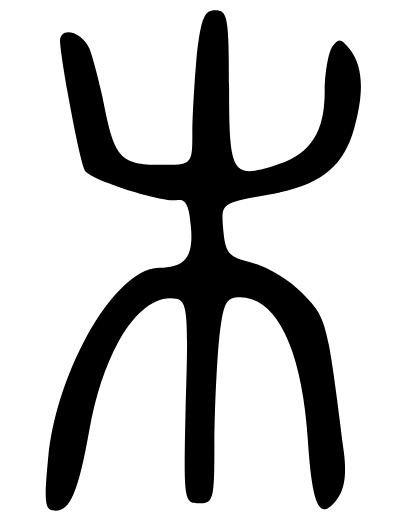90. The "Split Wood (Left Half)" Radical: 爿
No Joyo characters feature an on-duty radical 90, so this Radical Note will be quite brief. I'll simply mention a few things.
The four-stroke 爿 radical is on duty in this autonomous non-Joyo kanji:
爿 (a bed made by arranging long, narrow boards)
This kanji carries the on-yomi ショウ.
Aside from the 爿 character itself, radical 90 always occupies the left side of a kanji, always as 丬. In that case, the radical name しょうへん works.
That three-stroke variant serves as a component in these kanji, among others:
北 (205: north; to flee), where 匕 (radical 21: "katakana hi") is on duty
状 (717: shape), where 犬 (radical 94: "animal") is on duty
将 (899: commander), where 寸 (radical 41: "inch") is on duty
寝 (1441: sleep; to lie in bed), where 宀 (radical 40: "katakana u") is on duty
壮 (1514: robust), where 士 (radical 33: "samurai") is on duty
Henshall tells us in his newer edition that in 状, which once featured 爿 on the left, that component represented a "stand or bed, or boards used in building earthen walls." Similarly, in 床 (1389: bed), which originally had the form 牀, the 爿 depicted the profile view of an upright "stand" or "couch."
Our radical may also have the name ひだりかた, which requires some explanation. Here's the ancient form of 木 (tree, wood):

© Richard Sears
LST seal–script version.
Splitting this tree character in half vertically yields pieces now represented by 爿 and 片. These radicals go by unwieldy names in English:
爿: radical 90: "split wood (left half)"
片: radical 91: "split wood (right half)"
Henshall says, "The split is probably conceptual, since to achieve this with ancient tools would have been extremely difficult."
Nelson supplies the radical name ひだりかた for 爿, which makes sense, as ひだり means "left." But my proofreader can't find evidence that this name exists.
